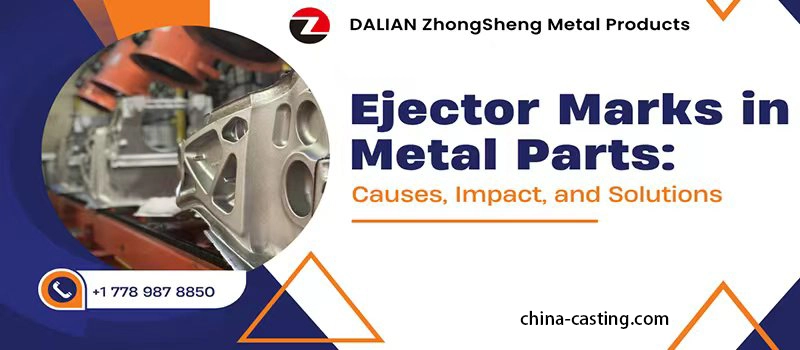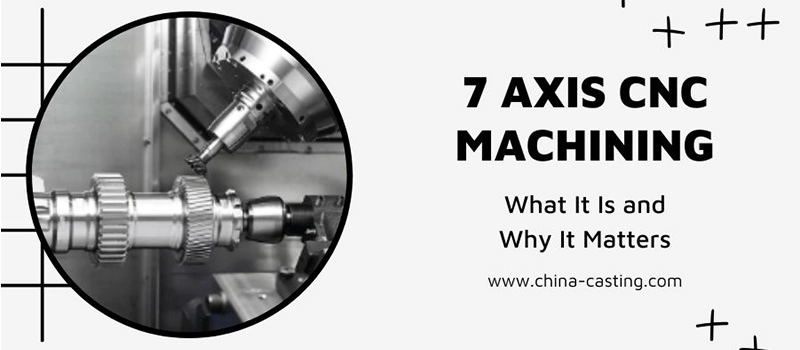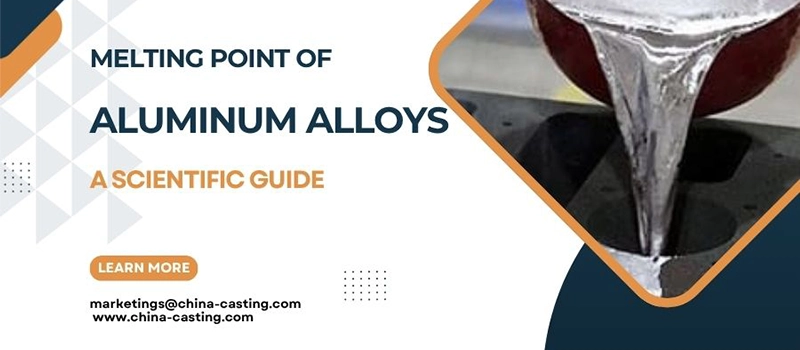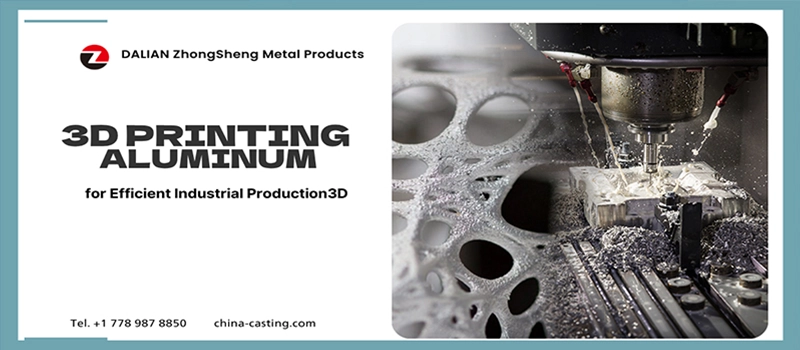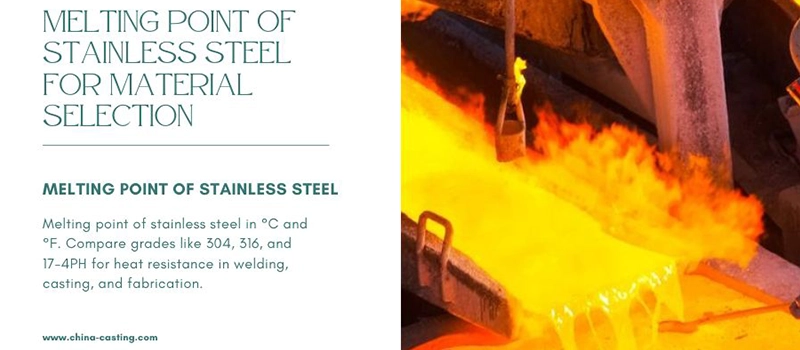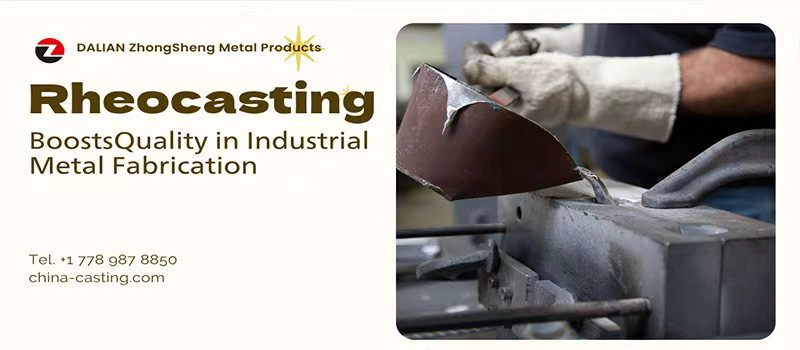Laser cutting service not delivering the results you need? Struggling with inconsistent cuts, poor tolerances, or outdated methods that waste time and materials? Frustrated by long lead times and wondering how to precisely cut steel, aluminum, copper, or stainless without compromising quality? Confused between CNC laser cutting, plasma, or waterjet systems? Is there a reliable solution that balances speed, accuracy, and cost in one process?
Laser cutting service is the answer. This advanced metal cutting technology offers clean edges, fast turnaround, and tight tolerances across a wide range of materials and applications. Whether you need laser cut sheet metal, stainless steel signs, aluminum panels, or custom metal parts, laser cutting delivers unmatched precision and efficiency.
Laser cutting services are redefining how we approach custom metal fabrication—and in this article, I’ll show you how they work, what makes them superior, and why they’re now the gold standard for precision manufacturing.
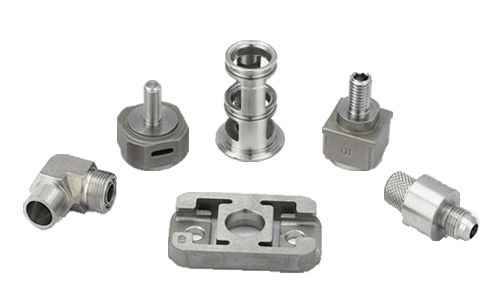
Get a quote now!
What Is Laser Cutting Service and How Does It Work?
Laser cutting service is a high-precision metal fabrication process that uses a concentrated laser beam to cut, melt, or vaporize material — most commonly metals. This technique is widely adopted in modern manufacturing due to its speed, accuracy, and ability to handle complex geometries without contact.
Understanding the Laser Cutting Process
Laser cutting involves directing a focused laser beam, usually generated by a CO₂ or fiber laser, onto a workpiece. The laser heats the material to its melting or vaporization point, allowing it to be cut with extreme precision. A high-pressure assist gas, such as nitrogen or oxygen, helps remove molten material from the cutting zone and improve edge quality.
The entire process is typically controlled by CNC (Computer Numerical Control) systems, which translate CAD or DXF design files into precise machine instructions. This allows the laser to follow detailed paths with minimal human intervention and maximum repeatability.
Main Components of a Laser Cutting System
- Laser Source: Generates the high-energy beam used to cut material.
- Beam Delivery System: Uses mirrors or fiber optics to direct the beam.
- Cutting Head: Focuses the beam and emits it through a nozzle.
- Assist Gas System: Adds compressed gases to enhance the cutting result.
- CNC Controller: Automates the cutting path based on digital design files.
- Worktable or Rotary Axis: Supports sheets, tubes, or custom-shaped materials.
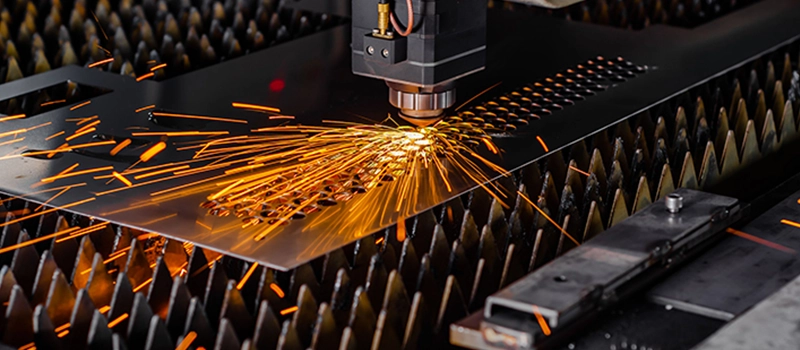
How It Works: Step-by-Step
- Design: A CAD file is prepared with all cut paths and dimensions.
- Setup: Material is placed on the laser machine’s bed.
- Focusing: The laser is calibrated and focused on the cutting surface.
- Cutting: The CNC system guides the beam along the predefined path.
- Completion: The cut part is removed, and the next job begins.
Advantages of Laser Cutting Service in Precision Fabrication
In modern manufacturing, precision is no longer a luxury—it’s a necessity. Whether you’re producing custom components for industrial machinery or intricate parts for commercial equipment, laser cutting service offers distinct advantages over traditional cutting methods. Its unique combination of accuracy, efficiency, and flexibility makes it an essential process in precision metal fabrication.
Unmatched Cutting Precision
Laser cutting uses a focused high-energy beam to produce exceptionally accurate cuts, often with tolerances as tight as ±0.1 mm. Unlike mechanical cutting tools that can wear out or distort material, the non-contact nature of laser cutting ensures the final product remains consistent from the first piece to the last.
This is especially important in industries where every millimeter counts, such as aerospace, automotive, medical devices, and precision tooling. Parts produced via CNC laser cutting fit perfectly with mating components, minimizing the need for rework or manual adjustment during assembly.
Superior Edge Quality and Clean Finishes
Traditional cutting methods often leave behind burrs, slag, or rough edges that require secondary processing like grinding or polishing. Laser cutting, on the other hand, produces smooth, clean edges right off the machine—reducing labor, saving time, and improving the aesthetic of the final product.
This is especially important for laser cut metal signs, custom laser cut logo signage, and parts with visible edges or intricate detailing. The result? Higher-quality parts with less post-processing, better appearance, and faster turnaround.
Efficiency and Speed in Production
Speed matters in modern production. Laser cutting services can handle high-volume orders quickly and efficiently thanks to:
- High cutting speeds, especially on thinner sheets
- Rapid switching between part designs via software
- Minimal material handling time and automatic nesting systems
This makes it ideal for everything from one-off prototypes to mass-produced laser cut steel panels, laser cut aluminum parts, or laser cut copper components. For OEMs and equipment manufacturers, this means faster time to market, reduced downtime, and increased scalability.

Design Flexibility and Customization
Whether you’re creating a single custom bracket or a thousand complex enclosures, laser cutting service adapts easily to your design requirements. It can execute:
- Intricate geometries
- Tight corners and small holes
- Custom laser cut patterns or engravings
- Rapid design changes
With the right laser cutting machine and CNC setup, manufacturers can respond quickly to design updates, client changes, or different product versions—without needing to invest in new tooling or machinery.
Minimal Material Waste and Better Yield
Material waste is money lost. Laser cutting services use advanced nesting software to arrange part layouts on metal sheets with minimal gaps. Combined with the narrow kerf width of the laser beam, this results in:
- Maximum use of raw materials
- Lower scrap rates
- Reduced overall production costs
This sustainability benefit also supports companies pursuing lean manufacturing and eco-efficient production.
In summary, the advantages of laser cutting service in precision fabrication are clear: greater accuracy, smoother finishes, faster production, and better material efficiency. These strengths make it a top choice for modern manufacturers looking to compete on quality, cost, and speed.
Comparing Laser Cutting with Traditional Cutting Methods
When choosing the right cutting process for your metal fabrication needs, understanding how laser cutting service compares to traditional methods is essential. While mechanical cutting, plasma cutting, and waterjet cutting all have their place in manufacturing, laser cutting outperforms them in several critical areas—especially when it comes to precision, material handling, and production efficiency.
Need Help? We’re Here for You!
Laser Cutting vs. Mechanical Cutting
Traditional mechanical methods such as sawing, punching, or shearing rely on physical force and blades. These tools are effective for simple tasks, but they come with limitations:
| Feature | Laser Cutting | Mechanical Cutting |
|---|---|---|
| Contact | Non-contact | Physical contact |
| Precision | High (±0.1 mm) | Moderate |
| Edge Quality | Smooth, clean | Rough, may require finishing |
| Tool Wear | None | Yes (blades wear out) |
| Flexibility | Complex shapes, small radii | Limited to straight cuts |
Mechanical cutting often causes tool deformation, material distortion, or burr formation, especially with soft or thin metals. In contrast, laser cutting machines use light, not pressure, to create sharp, burr-free edges with no tool wear or vibration.
Laser Cutting vs. Plasma Cutting
Plasma cutting uses an electrically conductive gas to melt through metal. It’s ideal for cutting thicker steel quickly but struggles with fine details and thin materials.
| Feature | Laser Cutting | Plasma Cutting |
|---|---|---|
| Material Thickness | Best for thin to medium metals | Better for thick metals |
| Edge Quality | Very clean | Rougher, more dross |
| Precision | Higher | Lower |
| Hole Size & Intricate Detail | Excellent | Poor |
| Heat Affected Zone (HAZ) | Small | Large |
| Suitable Materials | Steel, aluminum, copper, brass, titanium | Mostly steel |
For parts that require tight tolerances, smooth finishes, or small holes, laser cutting service is the superior choice. It creates a smaller heat-affected zone, which is especially valuable when cutting stainless steel or aluminum, as these materials can easily warp.
Laser Cutting vs. Waterjet Cutting
Waterjet cutting uses high-pressure water (often with abrasives) to erode material. While it’s great for cutting without heat—especially for ceramics or thick plastics—it has trade-offs in speed, cost, and finish.
| Feature | Laser Cutting | Waterjet Cutting |
|---|---|---|
| Cutting Speed | Faster | Slower |
| Operating Cost | Lower | Higher (abrasives & water) |
| Material Compatibility | Metals, plastics, wood | More versatile (but slower) |
| Edge Quality | Excellent | Good, may be grainy |
| Precision | High | High, but slower |
| Environmental Impact | Low | High water usage & slurry disposal |
For sheet metal fabrication, custom metal signs, or laser cut aluminum panels, laser cutting remains the most efficient and clean solution.
Summary: Why Laser Cutting Leads the Pack
| Criteria | Laser Cutting | Plasma | Waterjet | Mechanical |
|---|---|---|---|---|
| Best for Precision | ✅ | ❌ | ✅ | ❌ |
| Best for Speed | ✅ | ✅ | ❌ | ✅ |
| Edge Finish | ✅ | ❌ | ✅ | ❌ |
| Custom Complex Shapes | ✅ | ❌ | ✅ | ❌ |
| Operational Cost | ✅ | ✅ | ❌ | ✅ |
Laser cutting offers the best balance of speed, accuracy, and cost—especially for projects involving stainless steel, aluminum, or custom laser cut sheet metal. For manufacturers focused on high-quality parts and reliable production schedules, laser cutting services are clearly the superior option.
Applications of Laser Cutting Services Across Industries
The flexibility and precision of laser cutting service make it a core technology across a wide range of industries. From mass production of mechanical parts to custom signage and decorative elements, laser cutting delivers consistent quality and fast turnaround—whether for sheet metal, tubes, or complex assemblies.
In this section, we’ll explore how various sectors benefit from laser cutting services, and why this technology continues to replace traditional methods in both high-volume and specialized applications.
Automotive Industry
In automotive manufacturing, precision and repeatability are critical. Laser cutting service is widely used for:
- Chassis components
- Heat shields
- Brackets and frames
- Custom metal parts for engine assemblies
Thanks to CNC laser cutting, manufacturers can produce laser cut steel panels and aluminum brackets with tight tolerances, even at high production volumes. The clean edges and consistent quality help ensure automotive parts fit seamlessly into the final assembly line, reducing rework and improving reliability.
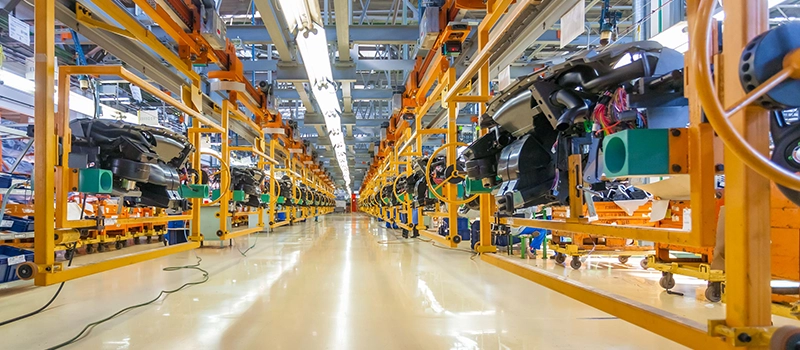
Agriculture, Mining, and Heavy Equipment
For industries that operate in harsh environments, durability is key. Laser cut parts made from mild steel, stainless steel, or alloy steel are essential in:
- Excavation equipment
- Tractor frames
- Mining support structures
- Agricultural machinery components
Laser cutting enables the production of heavy-duty sheet metal parts, including custom laser cut steel plates, laser cut tubing, and structural supports that can withstand pressure and corrosion. With minimal heat distortion and burr-free finishes, parts are stronger and more dependable.
Construction and Architectural Fabrication
In the construction sector, aesthetics and precision go hand in hand. Architects and builders rely on laser cutting service to create:
- Custom laser cut metal signs
- Laser cut panels for facades and ceilings
- Decorative aluminum and stainless steel screens
- Structural connection plates
This industry especially values laser cut logos, decorative signage, and custom laser cut sheet metal that can be installed directly on-site with minimal modification. The design freedom offered by laser cutting services is unmatched by plasma or mechanical methods.
Petrochemical and Energy Industries
In sectors like oil and gas, power generation, and renewable energy, components often operate in extreme temperatures and corrosive environments. Laser cutting service supports:
- Stainless steel laser cutting for piping systems
- Titanium and nickel alloy part fabrication
- Precision sheet metal components for electrical enclosures
- Custom-cut flanges, covers, and protective plates
Laser cutting ensures tight dimensional accuracy—essential for leak prevention, heat resistance, and part compatibility in sensitive installations.
Electronics, Appliances, and Consumer Goods
Laser cutting service is also ideal for high-volume precision parts used in appliances, enclosures, and consumer electronics. Typical applications include:
- Laser cut aluminum panels for control boxes and displays
- Laser engraved cutting boards or branded products
- Custom metal logos, badges, and plates
- Precision vent holes or slots in housings
For OEMs in this space, the ability to switch designs digitally and produce detailed cutouts with minimal setup time is invaluable.

Get a quote now!
Signage, Branding, and Decorative Metalwork
This is where laser cutting shines—literally. Custom laser cut metal signs, brass nameplates, aluminum logos, and intricate patterns are now common thanks to the precision of laser technology.
Key benefits:
- Sharp, consistent detailing
- Burn-free finishes ideal for polished stainless steel
- Freedom to create one-of-a-kind signage without expensive tooling
From small businesses to corporate branding, laser cutting service enables customization at scale.
Medical and Aerospace Sectors (High-Precision Use Cases)
In these regulated industries, tolerances are ultra-tight and material integrity is non-negotiable. Laser cutting services are trusted for:
- Surgical instruments
- Implant frames
- Aircraft brackets and turbine components
- Thin-wall tubing for fluid delivery systems
CNC-controlled laser cutting ensures repeatability, traceability, and compliance with international quality standards.
Why Industries Choose Laser Cutting Service
Across all these industries, the reasons for adopting laser cutting service are consistent:
- Precision and consistency
- Fast lead times
- Material flexibility
- Cost-effective customization
- Reduced post-processing
These advantages are especially attractive for global buyers who need quality metal laser cutting with guaranteed results.
Materials You Can Laser Cut: From Steel to Copper
One of the key advantages of laser cutting service is its compatibility with a wide range of materials. Whether you need to cut thin sheets, thick plates, or round tubing, modern CNC laser cutting machines can handle everything from stainless steel and aluminum to brass, copper, and even titanium.
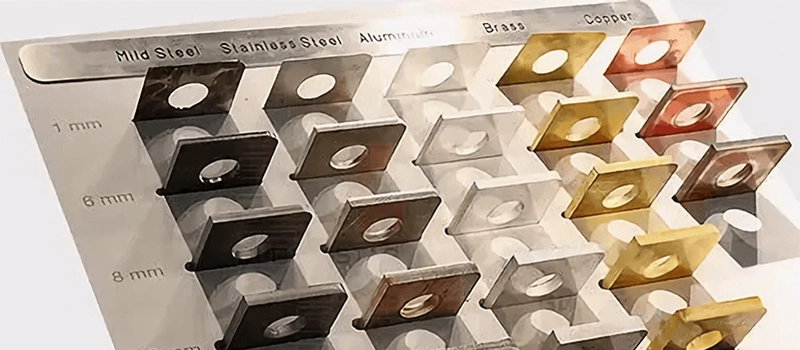
Stainless Steel
Stainless steel laser cutting is one of the most common applications in metal fabrication. Thanks to its corrosion resistance and strength, stainless steel is ideal for:
- Industrial parts
- Enclosures and cabinets
- Architectural panels
- Custom laser cut signage
Fiber laser machines can cut stainless steel up to 25mm thick with high precision and clean edges. Nitrogen is often used as the assist gas to prevent oxidation and maintain a bright, burr-free finish.
Aluminum
Aluminum laser cutting is widely used in industries like automotive, aerospace, and construction. It’s lightweight and conductive but requires precision handling due to its reflectivity.
Applications include:
- Laser cut aluminum panels
- Electronic housings
- Machine covers
- Architectural features
Using a fiber laser with nitrogen, cutting aluminum up to 15–20mm is possible while maintaining excellent edge quality. The reduced heat-affected zone prevents warping or discoloration.
Mild Steel
Mild steel is cost-effective and versatile. With oxygen as an assist gas, it cuts quickly and is used in a wide range of industrial components, including:
- Brackets
- Base plates
- Frames
- Support structures
Laser cutting mild steel provides strong mechanical performance while maintaining cost control, especially in large production runs.
Copper and Brass
Cutting copper and brass requires high laser power and specialized handling due to their reflective surfaces. However, modern fiber laser cutting systems are capable of processing these materials efficiently, especially for:
- Electrical contacts
- Decorative panels
- Heat transfer components
Laser cutting copper is ideal for precision electrical parts, where clean, distortion-free edges are essential for conductivity and performance.
Titanium and Other Alloys
High-strength alloys like titanium, nickel-based alloys, and Hastelloy can also be laser cut with precision. These materials are often used in:
- Aerospace
- Medical implants
- Chemical equipment
Because of their hardness and heat sensitivity, laser cutting service ensures clean cuts without contamination, which is critical for regulatory compliance and long-term reliability.
Sheet Metal and Tubes
Beyond flat materials, laser cutting service is also used for:
- Tube laser cutting (square, round, oval)
- Laser cut sheet metal (thin to thick gauges)
- Laser cutting pipe for structural or fluid flow systems
This opens up design flexibility for complex assemblies, furniture frames, and industrial piping systems.
Need Help? We’re Here for You!
Why Material Choice Matters in Laser Cutting Service
Selecting the right material for your project depends on:
- Application environment (corrosive, high heat, structural)
- Required thickness
- Precision and appearance needs
- Budget
Because laser cutting services are highly adaptable, suppliers can optimize cutting parameters for each material to ensure the best possible result—with minimal waste, high repeatability, and consistent quality.
How to Choose the Right Laser Cutting Service Provider
Choosing the right laser cutting service provider is more than just comparing prices—it’s about selecting a partner who can consistently deliver quality, precision, and reliability. Whether you need custom laser cut sheet metal, branded signage, or high-volume industrial parts, the capabilities of your supplier directly impact your production outcomes.
1. Technical Capabilities and Equipment
Your provider should be equipped with modern CNC laser cutting machines, capable of handling a variety of metals and thicknesses. Look for services that offer:
- Fiber laser cutting for stainless steel, aluminum, copper, and brass
- Tube laser cutting machines for round, square, or custom-shaped pipes
- Sheet metal laser cutting with large bed sizes for industrial-scale jobs
- Integration with machining, bending, and welding to support one-stop fabrication
The more advanced the equipment, the better the cutting tolerances, faster the turnaround, and more material options available.
2. Certifications and Compliance
Working with certified providers ensures that your products meet international quality and safety standards. Look for:
- CE Certification (for European markets)
- ISO 9001 Quality Management
- RoHS, REACH, or industry-specific compliance if applicable
- European Representation (if exporting)
As a global supplier, we at ZhongSheng hold CE and EU REP certification—providing confidence and legal clarity for our European buyers.
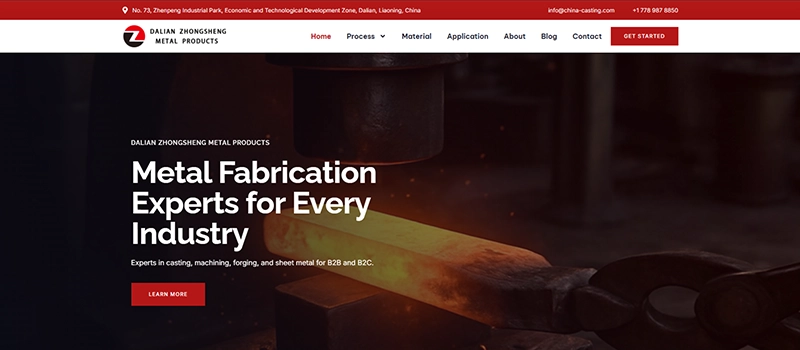
3. Experience with Drawings and Customization
A great laser cutting provider should be able to interpret and process engineering drawings, CAD files, or even hand sketches. Look for:
- Support for DXF, DWG, PDF, and 3D formats
- Ability to suggest improvements to designs for better cutability
- Tolerance management and file conversion services
This is especially important for custom laser cut metal signs, logos, or complex structural parts. Poor file handling can lead to dimensional errors or delays.
4. Lead Times and Delivery Assurance
Time is money. Delays in delivery may disrupt your production line, especially in industries like construction, equipment manufacturing, and retail branding. A reliable provider should offer:
- Clear production timelines
- Fast response to inquiries
- Express service options for urgent orders
- Shipping experience to your country
Our clients often rely on us for laser cutting service online with bulk delivery to North America, Europe, Japan, and Korea.
5. Quality Control Processes
Ask if the provider performs full inspections, material certification, and dimensional verification before shipment. Reliable QC ensures your laser cut parts arrive:
- Free of burrs or defects
- Cut to the correct tolerance
- Ready for installation or assembly
A good supplier may even provide sample cuts, material traceability, and batch reports upon request.
Need Help? We’re Here for You!
6. Value-Added Services
The best providers offer more than just cutting. Ask about additional support such as:
- Bending and forming
- Welding
- Coating or finishing
- Packaging and labeling
- Assembly or sub-assembly services
By choosing a one-stop metal fabrication supplier, you save time, avoid communication gaps, and reduce overall cost per part.
Final Tip: Ask for a Trial Order
If you’re unsure, request a trial order or a few sample laser cuts before committing to a full batch. This helps you test:
- Edge quality
- Tolerances
- Supplier responsiveness
A professional laser cutting service provider will happily demonstrate their capabilities.
Cost Breakdown: What Affects Laser Cutting Service Prices
Understanding the cost structure of laser cutting service is crucial for making smart purchasing decisions. While the process is known for its efficiency and precision, many buyers still face uncertainty about how prices are calculated—and what drives those costs up or down.
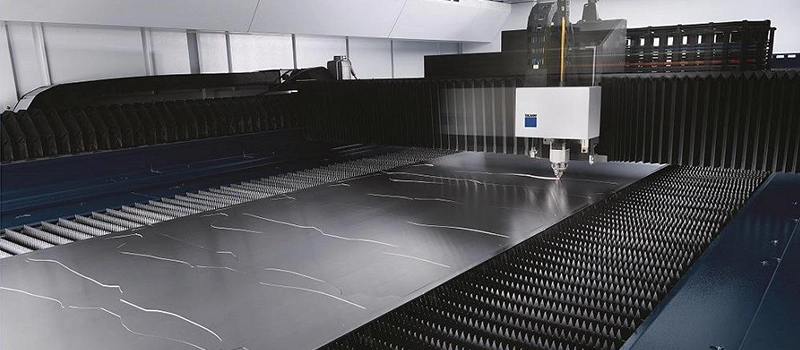
1. Material Type and Thickness
Material is often the largest component of cost. Different metals vary significantly in price and cutability:
- Stainless steel and titanium are more expensive and require more energy to cut.
- Aluminum is lightweight but reflective, needing higher laser power.
- Copper and brass are even more reflective and require slower cutting speeds.
- Mild steel is the most economical and fastest to process.
Thicker materials also increase cost, as they require slower cutting speeds, multiple passes, and more assist gas consumption.
2. Complexity of the Design
The more complex your design, the more time the machine spends cutting. Factors that increase cutting time (and thus cost) include:
- Fine details and small radii
- Lots of small holes or sharp corners
- Engraving or marking in addition to cutting
- Multi-layer or 3D designs for tube laser cutting or folded sheet parts
Laser paths are controlled by CNC, so even small design changes can dramatically improve efficiency. That’s why working with a supplier who can help optimize your drawings is so valuable.
3. Cutting Time and Labor
Most laser cutting services calculate production cost based on machine runtime. The longer your parts take to cut, the higher the charge. Factors influencing runtime include:
- Cutting speed (affected by material, thickness, power)
- Travel distance of the laser head
- Pause time for sharp turns or piercings
In some factories, labor for loading/unloading, material handling, and QC is factored separately—especially in custom laser cutting service.
4. Quantity and Order Volume
Economies of scale matter. While laser cutting requires no tooling, setup time still exists for machine calibration, material prep, and programming. Larger batch sizes help spread those costs:
| Quantity | Cost Per Unit |
|---|---|
| 1–10 | High |
| 11–50 | Medium |
| 50+ | Low (bulk pricing) |
This makes laser cutting ideal for both prototyping and mass production—as long as you understand how quantity impacts cost.
Need Help? We’re Here for You!
5. Post-Processing and Secondary Services
Additional services such as:
- Bending
- Welding
- Deburring or surface finishing
- Powder coating or anodizing
- Assembly and packaging
…can increase your final cost but are often worth it to receive finished, ready-to-use parts. Integrated suppliers offer better pricing on these services compared to outsourcing each stage separately.
6. Shipping, Packaging, and Export Logistics
For international buyers, shipping and customs clearance can be a major cost component. Things to consider:
- Weight and volume of laser cut metal parts
- Packaging (protective films, crates, pallets)
- Shipping method (air freight vs. sea freight)
- Destination country duties or VAT
Our company offers optimized packaging and freight consolidation to lower shipping costs, especially for buyers in North America, Europe, Japan, and Korea.
Tips to Reduce Laser Cutting Costs
- Use efficient part nesting to minimize material waste
- Avoid overly tight tolerances unless necessary
- Choose a supplier that offers one-stop metal fabrication
- Use standard materials and common thicknesses when possible
- Combine multiple part types into one order
By understanding how each factor influences cost, you can make informed decisions that balance budget, quality, and delivery timelines.
Integrated Metal Fabrication: More Than Just Laser Cutting
While laser cutting service is a cornerstone of modern manufacturing, true efficiency comes from integration. Many projects don’t end with cutting—they require forming, machining, surface treatment, or assembly. That’s why working with a supplier who offers full-service metal fabrication, not just cutting, is essential.
Combining Laser Cutting with Machining, Bending, and Welding
After your metal parts are laser cut, they may still require:
- Bending for enclosures, brackets, or housings
- CNC machining for tight-tolerance holes or tapped threads
- Welding for structural assemblies or sealed chambers
- Powder coating, anodizing, or plating for protection and appearance
When all these services are available under one roof, your production becomes smoother and more cost-effective. You avoid the delays and quality issues that come from coordinating multiple vendors.
For example:
- A laser cut aluminum panel can be bent, welded, and powder-coated in a single workflow.
- A custom laser cut steel plate can go straight to CNC tapping without being shipped to a second factory.
- A laser cut logo sign can be engraved, polished, and assembled before shipping.
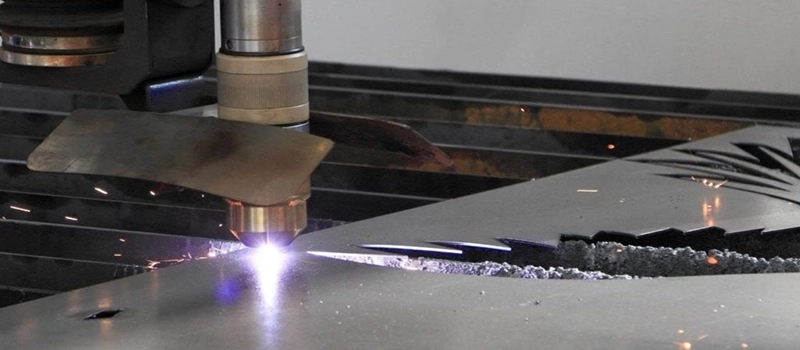
From Drawing to Finished Product: One-Stop Manufacturing
The most competitive manufacturers offer design-to-delivery workflows. That means you can send a drawing and receive finished, assembled parts—ready for use.
At ZhongSheng, for example, we support:
- Design file consultation (2D/3D/DXF)
- Laser cutting service (sheet and tube)
- Forming, machining, coating
- Assembly and packaging
- Shipping to your door
Whether you’re ordering laser cut parts, custom laser cut signage, or structural components, everything is aligned to reduce production time, cost, and errors.
Benefits of One-Stop Laser Cutting and Fabrication
| Benefit | Description |
|---|---|
| ✅ Faster Lead Times | No inter-factory transfers or scheduling conflicts |
| ✅ Consistent Quality | One QC team, one process chain |
| ✅ Lower Costs | Volume pricing, reduced logistics |
| ✅ Better Communication | One supplier, clear coordination |
| ✅ Stronger Accountability | One company is fully responsible |
This is especially valuable for:
- OEM equipment buyers
- Architectural metalwork
- Construction fittings
- Custom branding and signage
Supporting Samples, Prototypes, and Mass Production
Integrated services also allow for flexible scaling. You can:
- Start with a sample cut or trial part
- Adjust tolerances or dimensions
- Move seamlessly into full production without switching suppliers
This end-to-end support simplifies everything from:
- Laser cutting stainless steel signs
- To bulk orders of aluminum laser cut panels
- To precisely bent copper enclosures
Our factory handles batch sizes from 1 to 10,000 pieces, with repeatable quality and traceability at every stage.
When Laser Cutting Alone Isn’t Enough
Let’s be honest—some suppliers only offer cut-and-ship services. That means:
- You handle finishing, assembly, or error correction yourself
- You may need to deal with multiple vendors
- Your costs and risks increase
That’s not efficient. That’s not scalable.
Choosing a fully integrated laser cutting service provider eliminates these pain points and lets you focus on your core business—while we handle the technical details.
Integrated Laser Cutting Service Means Peace of Mind
When you work with a provider that offers more than just laser cutting, you gain:
- Speed
- Control
- Reliability
- Better ROI
It’s not just about parts—it’s about creating a fabrication workflow that’s built for your success.
Common Challenges in Laser Cutting (and How We Solve Them)
While laser cutting service offers unparalleled precision and speed, it’s not without its technical challenges—especially when dealing with diverse materials, tight tolerances, or high-volume production. The good news is that with the right experience, equipment, and workflow, these problems can be effectively minimized or even eliminated.
Let me walk you through the most common issues faced in laser metal cutting, and how professional suppliers like us solve them.
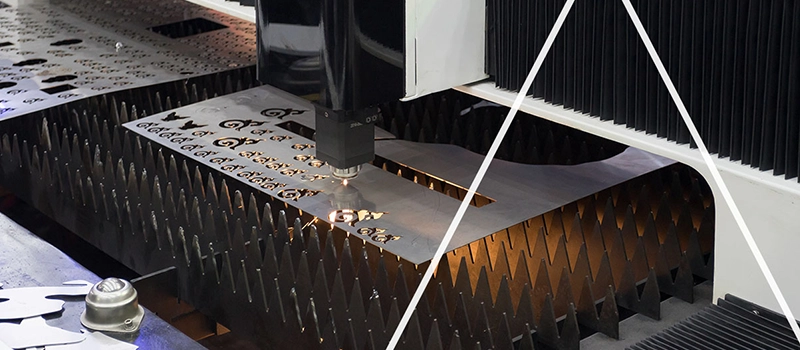
1. Heat-Affected Zones (HAZ) and Material Warping
One of the most common concerns in laser cutting steel, aluminum, or copper is the formation of a heat-affected zone. This occurs when excessive heat from the laser beam alters the material’s microstructure, potentially causing:
- Edge hardening
- Color changes (especially in aluminum)
- Warping in thin sheets
Our solution:
- Use fiber laser cutting machines with optimized parameters for each material
- Apply assist gases (nitrogen or air) to reduce thermal effects
- Clamp thin sheets securely to avoid distortion
- Use lower power and faster speed for delicate jobs
2. Burr Formation on Edges
While laser cutting is known for smooth finishes, improper settings or cutting dirty materials can lead to burrs or dross—extra metal stuck to the edge.
This affects:
- Fit and finish of the part
- Assembly accuracy
- Aesthetic appearance of visible parts like laser cut signs
Our solution:
- Calibrate laser beam focus and gas pressure per job
- Pre-clean all materials
- Include deburring or sanding if required
- Use nitrogen cutting for burr-free stainless steel laser cutting
3. Inconsistent Tolerances or Dimensional Errors
Dimensional consistency is key in precision laser cutting, especially for interlocking parts, fasteners, or load-bearing structures.
Possible causes of tolerance issues include:
- Machine misalignment
- Inconsistent sheet thickness
- Software misinterpretation of files
- Thermal expansion
Our solution:
- Operate high-end CNC laser cutting machines with micron-level positioning
- Inspect and calibrate machinery daily
- Validate all incoming material
- Perform full QC checks on critical dimensions

Get a quote now!
4. File Format and Drawing Errors
Low-quality or incompatible CAD files can lead to:
- Skipped paths
- Incomplete cuts
- Misinterpretation of scale or layers
Our solution:
- Support all major formats (DXF, DWG, AI, STEP, PDF)
- Provide free pre-checks and drawing assistance
- Suggest improvements to optimize cutting paths and reduce runtime
- Simulate toolpaths before production to eliminate risk
5. Lead Time Delays
Inconsistent lead times are a major pain point for buyers relying on laser cut metal parts for time-sensitive projects. Causes may include:
- Poor production planning
- Unstable material supply
- Equipment downtime
- Miscommunication during ordering
Our solution:
- Implement lean production systems
- Maintain in-stock materials for common jobs (steel, aluminum, SS)
- Offer online laser cutting service with tracking and rapid updates
- Assign dedicated account managers for international buyers
6. Inconsistent Quality Between Batches
In repeat orders or long-term production contracts, customers may find batch-to-batch quality fluctuations—a common issue with inexperienced suppliers.
Our solution:
- Use standardized cutting templates
- Archive digital files and settings per client/project
- Document cutting parameters for all jobs
- Assign fixed operators to recurring product lines
This ensures every laser cut steel sheet or custom logo sign looks and performs the same—no surprises.
7. Poor Packaging or Shipping Damage
Even perfectly cut parts can be ruined by poor handling. Scratches, dents, or moisture damage during shipping is a real risk—especially for overseas deliveries.
Our solution:
- Apply protective films to aluminum and stainless surfaces
- Use foam-lined crates and moisture barrier packaging
- Palletize and label parts clearly
- Offer freight insurance and documentation support
Partnering with a Reliable Laser Cutting Service Solves These Problems
Every manufacturing process has its risks. The difference is whether your supplier plans for them, monitors them, and fixes them before they affect your bottom line.
With a strong quality system, experienced engineers, and advanced laser technology, we make sure your custom laser cut parts arrive:
- On time
- Within tolerance
- With perfect edges
- Ready for assembly
This is what separates a supplier from a true manufacturing partner.
Conclusion: Why Laser Cutting Service Is the Future of Precision Fabrication
From improved accuracy and cleaner cuts to faster production times and scalable customization, laser cutting service has transformed how manufacturers approach metal fabrication. Across industries—whether automotive, construction, energy, or electronics—this technology consistently delivers better results, tighter tolerances, and greater flexibility than traditional methods.
The rise of CNC automation, fiber laser systems, and cloud-based platforms has only made laser cutting services more powerful, accessible, and cost-effective. And with its compatibility across materials like stainless steel, aluminum, copper, and brass, it continues to support a wide range of applications—from laser cut metal signs to industrial sheet metal components.
As global competition increases and customer demands become more complex, investing in the right laser cutting service is no longer optional—it’s essential. Whether you’re sourcing prototypes or large-scale production parts, choosing a reliable and integrated supplier ensures quality, efficiency, and peace of mind.
In today’s market, laser cutting service isn’t just a tool—it’s your competitive advantage.


